Chris Hardwick's Blog, page 100
April 29, 2025
THUNDERBOLTS* Is Marvel at Its Most Contemplative (Review)
I am certainly not going to blow any minds by saying the Marvel Cinematic Universe has had some ups and downs in the past five years. While always a box office fixture, the quality of the offerings has varied wildly since Avengers: Endgame, both in theaters and on Disney+. We know the franchise is heading toward a Doomsday, but even with that, it feels exceptionally rudderless. That’s how, in a matter of a couple of months, we can go from the unfocused, overblown mess of Captain America: Brave New World to the relatively intimate, moodier Thunderbolts*. Like one of its main characters, it’s a night-and-day change.
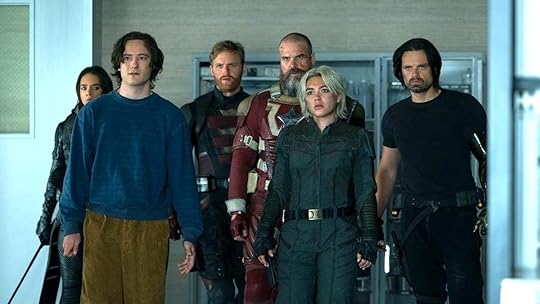 Marvel Studios
Marvel StudiosAfter the film’s initial announcement and its early trailers, I was a bit concerned Thunderbolts* would be far too esoteric for the average viewer. Its roster of undeserving heroes consisted of supporting or even ancillary figures in a couple of Marvel’s more ignominious titles. Luckily for us and for the studio, one of those figures is the insanely watchable Florence Pugh and another is basically the MCU’s last-standing OG, and most popular character in Sebastian Stan’s Bucky Barnes. Focusing on Pugh’s Yelena Belova’s search for meaning in the repetitive world of assassination for hire is the perfect “in” for a directionless franchise badly in need of a North Star.
As you’ve no doubt seen in Thunderbolts* trailers and such, the film follows Yelena as she has lost her lust for life after her sister Natasha’s death several years back. She’s fed up with the wetwork she does for CIA Director Valentina Allegra de Fontaine (Julia Louis-Dreyfus, fully unleashed). Valentina is facing a House impeachment hearing for her nefarious and illegal activities with Junior Representative James Buchanan Barnes (Stan) as a major instigator. Val gives Yelena one final mission, and then she’s out and can do more public-facing good.
 Marvel Studios
Marvel Studios The trouble is, Val has given a similar mission to several of her operatives, including Ava Starr (Hannah John-Kamen), John F. Walker (Wyatt Russell), and Antonia Dreykov (Olga Kurylenko). They all show up at a facility, each tasked with taking out one of the others. Soon realizing this has all been a set-up for Val to get rid of evidence, the four along with the mysterious Bob (Lewis Pullman) attempt to escape and go into hiding. Yelena’s father Alexei (David Harbour) shows up to help and Bucky eventually recruits them all to perhaps take down Val once and for all in Thunderbolts*. But other stuff, including Bob’s wild and unchecked powers, get in the way.
I was pleasantly surprised by how straightforward the narrative for Thunderbolts* is. It’s a much smaller, more character-focused film than I had figured, which I think is absolutely to its benefit. Director Jake Schreier’s previous work on TV series like Beef and indie movies like Robot & Frank translates to a movie that, for once, doesn’t have the glossy fakeness of a lot of recent MCU movies. Sure, we get the prerequisite potential world-ending crisis, but overall the action is more grounded, the scenes lit more realistically, and the story focusing on the feelings of isolation and unworthiness that plague Yelena and the others. These aren’t good people, but they’re all pretty tired of doing bad. Finding yourself without station in life is exceedingly relatable in these ever-worsening times.
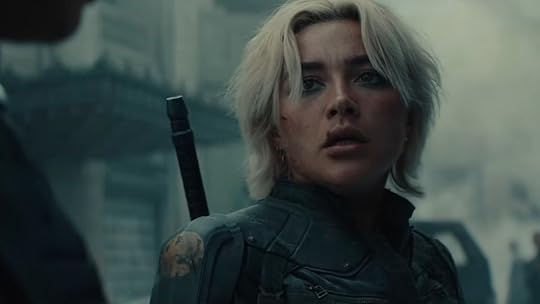 Marvel Studios
Marvel StudiosThunderbolts* is certainly not without quips and snark, but with a couple of exceptions, they fit the vibe of the movie. Good as the performances are in general, I grew very tired of Val’s spin-doctoring and especially of Alexei’s “I’m a loud Russian stereotype!” schtick. The more serious relationship moments between Yelena and Alexei are among the movie’s best scenes, but they’re fewer and further between than you’d hope. Pugh and Pullman really maintain the movie’s central battery, and it’s on them that the movie finds its heart, even amid the typical superhero fights.
I was not bowled over with joy watching Thunderbolts*, nor was I annoyed and overwhelmed by mess. This is not an MCU film like Brave New World that feels so reshot and stitched together as to be dizzying. I think it’s in the upper-half, maybe even top quarter, of Phase 4 and 5 movies. Five has certainly been stronger overall, it just happened to have two of the biggest stinkers. I like that we get a movie like Thunderbolts* that doesn’t feel like it only exists to check a box until the next big event. Its aspirations are to tell a story about side characters having to take the lead, and I very much vibed with that.
Putting character over spectacle helps Thunderbolts* achieve its goals nicely while never quite reaching for anything greater. But sometimes that’s enough.
Thunderbolts* ⭐ (3.5 of 5)
Kyle Anderson is the Senior Editor for Nerdist. He hosts the weekly pop culture deep-dive podcast Laser Focus. You can find his film and TV reviews here. Follow him on Letterboxd.
The post THUNDERBOLTS* Is Marvel at Its Most Contemplative (Review) appeared first on Nerdist.
April 28, 2025
THE LAST OF US’ Gabriel Luna on Tommy and Filming Season 2’s Emotional Third Episode
I wrote in my pre-season review of The Last of Us‘ second season that Gabriel Luna’s Tommy Miller is “a much bigger, more important part of the show” than he was during season one. I also said the show asks Luna “to do a lot, and he’s excellent with everything he has to carry.” Now viewers have had a chance to see exactly why I sang his praises. In the season’s stunning second episode Luna was essentially an action star. Tommy led the commune’s defense against the infected horde in one of the best hours of TV ever made. The fallout to that attack and Joel’s death then posed a very different challenge for the actor.
What was it like filming season two’s emotional third episode? I got a chance to speak to Luna about that, Tommy’s evolution on The Last of Us, how he views his character versus the way Joel did, and the emotional toll of working on “The Path.”
 HBO
HBONerdist: One of the things that really bothers me about modern television and long waits between seasons is that audiences, understandably, forget a lot of what happened previously. In your case, I think it’s really easy for viewers to tune into season two, see Tommy as a leader in Jackson, and forget that we once knew him entirely as a screwup and a follower. So I’m wondering how much of Tommy’s past is framing his thoughts and actions now?
Gabriel Luna: First of all, who hasn’t gotten a little drunk and knocked out a guy in a bar for putting his hands on the waitress? So, screwup? Yeah, I mean, you’re probably right. But he also always had his heart in the right place. That’s why he has made the choices that have landed him in Jackson. That landed him a beautiful wife who is a great leader and heroic and inspiring. That led to his beautiful growing family. His heart being in the right place and giving him a sense of direction and a sense of purpose is what led him to the present moment and allowed him to have the readiness to take on what eventually befell Jackson. He’s always had it in him to be that leader. It just came with time and maturity and experience.
 HBO
HBOJoel said Tommy would bounce from group to group as a follower. How much of what we see in season two is Tommy being this new person that he’s grown into, and how much, if any, is it him sort of fighting back against who he might naturally have been?
Luna: The idea of being a follower is kind of Joel’s perspective, right? Because it’s a way of [Joel] making it right in his heart that his brother left him. And the truth of it, at least the truth of it to Tommy, is less following others and more being of service to others. That goes with his military background, which informs his current position as the head of the security council in Jackson. But at the same time, he’s doing it in service of the city. He’s doing it in service of his wife who’s our elected representative. So he’s not actually rebelling against any of his nature. He’s actually kind of falling in sync with what his nature is, which is to be of service to others.
 HBO
HBOWe’re going to talk about episode three, but to do that we have to go back to episode two. Episode two is essentially an action movie where you’re running around fighting infected. Episode three is the fallout, which is a lot more contemplative. What type of story do you find more challenging as an actor to film? Which one do you find more fun? The one that requires a lot of physical work or the one that’s a little bit quieter?
Luna: First of all, it’s all fun for me. Even the darker moments. It’s all very fun to get in there with your castmates and dig into it. I love aspects of all of it. I love the action aspects. And I love just acting as it’s most true when you’re just doing. It’s not about acting, it’s about doing. And a well-crafted action set piece with meaningful action and meaningful beats for why things are happening, reasons why rounds are being squeezed off, reasons why punches are thrown, reasons why you have to incinerate a giant monster with the flame, it all has to be lines in the script that ring true the same way if you’re trying to elicit an emotional response with a line of dialogue. It has to be the same with every punch thrown.
So when it is really well crafted, it’s kind the purest form of acting. It’s just kind of being and doing. And it certainly makes it feel very, very real on the day.
 HBO
HBOAll of the quieter moments, those are really challenging because where the action is kind of cause-and-effect, once you get into those quieter moments there’s just infinite possibilities of how it can all play out, how one reacts. That can be daunting at times when you’re in preparation. But then when you’re there on the day with incredible scene partners like Bella Ramsey and Catherine O’Hara, and Isabella Merced and Pedro Pascal, it’s just alleviates all concerns, man. All kinds of worries and fear go out the window because those are really incredible people just to sit across from and to live together with. So yeah, both have their challenges and their gifts, but both are always fun.
You say those quieter moments can be daunting but that you have other scene actors, except your first scene in this episode is as quiet as it gets and you don’t have someone with you. It’s when you go to clean your brother’s body. How did you prepare for that scene? What are you bringing into that scene to get into that mind frame?
Luna: That was directed by Peter Hoar, who’s an incredible director and handles the emotional moments of the show really, really well. He directed “Long, Long Time,” the episode with Nick (Offerman) and Murray (Bartlett) last season.
I had to be careful because in rehearsal it was already all coming out and I was trying to pace myself. He had several different shots that we had planned and I asked Peter to come in tight first. I wanted to get that heavy lifting out of the way. I was trying not to get all worked up about it, because I knew how important it was. And trying to design it in your head and prepare for what it’s going to be is only going to push you further away from what it needs to be.
 HBO
HBOSo I just tried to relax and I went outside and I was kind of welling up already, just standing outside the door because I’m standing in the middle of the street. That whole set that you see is real. I mean, that whole town is there. And I remember standing outside the door of the restaurant, which opens up into a fully working interior of the mess hall, and my eyes were starting to water. But there’s fire burning everywhere all around me. So it started to just dry up all this emotion, and I’m just thinking about all these weird technical aspects of things. All of that is swirling in my head. Then I walk through the door and it all just completely evaporates because it’s just me and the scene. And, of course, 50 crew members and a camera and everything else.
But I walk up to that body and what came to mind was being at my grandfather’s funeral in 2013 where I was asked to go into the immediate family only viewing of the body. At the time, I was the only one there. He’d lost both of his sons, he’d been divorced. And I was his sole heir. So when it came to immediate family, it was just me. I remember that being the true life experience that was flashing through my head as we were doing the scene in episode three.
But yeah, the more preparation I tried to do on that scene, the further I got from what I wanted. And once I just kind of relaxed and eased into it, all of the memories and all of the inspiration kind of came.
 HBO
HBOOne of the reasons I’ve been so drawn to your performance this year is I think it’s really nuanced. Tommy has taken on this leadership role and he’s trying to keep things under control, but there are these moments where the mask of cool and calm sort of slides off. That comes up with Ellie when she says Joel would already be going out after Abby. Tommy snaps at her, “Don’t talk to me like I didn’t know him.” What is it about that moment that pushes the veil of calm off for a moment? What is it about that interaction that pushes him too far?
Luna: It’s great writing first. But I’ve so often gotten to be the fun uncle Tommy, while Joel was taking all the disciplinary actions. But now she’s mine. She’s my charge and she’s mine to look after. And she’s a young adult and is going to do what she wants. But in that scene, I have the first moment of having a teaching moment with her that isn’t about training. It’s more about the central thesis of our relationship and our family and what the dynamics are now. Because when you lose somebody abruptly like that, all the family dynamics shift and everyone has a different place and they have different responsibilities. People pick up where the loved one they lost would have, with tasks that they would’ve been assigned with.
So I think it’s that. You see the first flashes of what it is to be Ellie’s paternal figure in her life. And sometimes the young pups need to be nipped at, so that they can understand what the reality is of certain situations.
 HBO
HBOYou have another one of my favorite scenes in this episode. It’s the scene with Catherine O’Hara, which terrified me because of what she says and how smart Gail is. But I want to know what it’s like when you’re sitting there with Catherine O’Hara, a legend, and she’s absolutely crushing it in that role. What’s it like trying to do your job and be in the moment while also watching this incredible fellow performer?
Luna: She and I worked on the same HBO movie 16 years ago in Austin, Temple Grandin. I was just a day player, and we didn’t have a scene together, but we were in the hair and makeup trailer together. We had a really lovely conversation back then. She was so kind and welcoming. The only regret I had is that I wasn’t working with her that day. It took 16 years, but it came around and the experience was everything I would’ve hoped it would be.
 HBO
HBOShe’s a master. She’s an absolute master. And it is those who have that funny bone and have that comedic sensibility that are always the greatest dramatic actors, because they embody the truth of life. It’s that it’s always both. It’s always good and evil, it’s always happy and sad. The extremes are always happening all at once. And she has that. That’s what makes her exciting to watch and unpredictable. You know that the pendulum can swing to the maximum in both directions.
I remember limping around all that day. We had finished all the action stuff and foolishly, I went to the gym and started pushing sleds without adequately stretching. My legs were super tight from just running around in cowboy boots, my calves were super tight. I was doing sled pushes at the gym and then feeling a strain in my calf. And so the whole day, I remember just hobbling around and grabbing my guitar and playing “Take Me Out to the Ballgame” because we were at the little league field, but we just had some really wonderful chats in between takes. Then just she goes into it, and seeing all the little tiny micro expressions that she has, the twinkle in her eyes of just somebody who’s seen the other side, she’s incredible. I treasure those moments.
 HBO
HBOTommy knows Ellie really well. He says you’re basically exactly like my brother, and he knows him better than anybody. So by not keeping an eye on her immediately, was Tommy tacitly letting her sneak out of Jackson?
Luna: I’m sure Tommy’s got his hands full with Benjamin, his son, his wife, and everything else. But I think it’s still a matter he was able to see that she’s an adult before Joel was. And that’s why I’m the one that takes her shooting. I’m the one that takes her out riding. I was the one to see the warrior that she is, and the adult she’s become, before he was. And he was still trying to hold onto this to the young girl and the daughter that she is the. So I’m a little bit more ready to let her choose her path.
I don’t think I consciously knew she was going to take off that night and turned a blind eye. It’s that Tommy has a better understanding of who she is as an adult and that she’s left untethered because she is her own person.
Mikey Walsh is a staff writer at Nerdist who has never knocked someone out in a bar. You can follow him on Bluesky at @burgermike. And also anywhere someone is ranking the Targaryen kings.
The post THE LAST OF US’ Gabriel Luna on Tommy and Filming Season 2’s Emotional Third Episode appeared first on Nerdist.
This Small Change to THE LAST OF US Intro Is HEARTBREAKING
Oh, The Last of Us. In season one, The Last of Us broke our hearts over and over again, but at least we could hang onto the beautiful dynamic between Pedro Pascal’s Joel and Bella Ramsey’s Ellie when times got tough. But as a small but devastating change to The Last of Us‘ intro credits drives home something we already knew, that time is now officially over. Get ready for only tears, tears, and more tears, every time you crack open a brand new episode of The Last of Us. Here’s what has now officially changed in The Last of Us season two’s opening credits.
The Last of Us has a beautiful and symbolic opening sequence, which we love. And the amazing and terrible thing about symbolic intros is that they can be adapted as the story changes, to include new story and plot developments. Starting with episode three of The Last of Us season two, one such change officially took root. And it’s a devastating one. Throughout season one and into season two, The Last of Us concluded its credits with a meaningful final sequence which showed Joel and Ellie, rising, or growing if you will, out of a tangle of Infected vines. Joel and Ellie emerging from the fungus spoke to how their relationship was the heart of the series. And a little bit offered the solace of knowing that two of our heroes were overcoming the dangerous circumstances in which they lived despite the odds. But no more.
As many know, in The Last of Us season two, episode two, Joel met his death. Abby, a Firefly whose surgeon father he had murdered in Salt Lake City, killed him. It’s a vicious cycle of death and revenge. And the fallout is that now Ellie must take on the apocalyptic world of The Last of Us. This point is conveyed in many ways. But the change to The Last of Us intro credits is one of the most poignant and elegant. Now, instead of the intro ending with Joel and Ellie rising to meet us, Ellie emerges alone. OUCH. Talk about one last twist of the knife.
 HBO
HBOThe Last of Us season two, episode three sees Ellie begin her own quest for revenge. And so, the cycle keeps turning its vicious turn. We just hope we don’t wake up one day to find the intro credits have changed again and now NO ONE is waiting to greet us as we enter the newest episode of The Last of Us.
The post This Small Change to THE LAST OF US Intro Is HEARTBREAKING appeared first on Nerdist.
Watch Mon Mothma’s Intense ANDOR Dance Scene for an Entire Hour
We’ve known the Star Wars galaxy has music that sounds like Earth jazz, thanks to the cantina band in A New Hope. And we also know they have music that sounds like disco, ever since Jabba’s palace in Return of the Jedi. But thanks to episode 3 of Andor season two, we now know the galaxy also has a version of EDM. And that’s because Senator Mon Mothma (Genevieve O’Reilly) was losing herself to the beat of a high-energy dance track at her daughter’s wedding in that episode. And a lot of fans took a liking to that music. Now, the official Star Wars channel has uploaded a video of Mon dancing to this song for a full hour. You can watch it right here:
These weddings on the planet Chandrilla take three days to complete. But at least they look like they end with a bang. Honestly, who hasn’t been just like Mon Mothma in this scene at least once in their lives? We’ve all gonna a little too tipsy at a wedding, and made fools of ourselves on the dance floor. Mon certainly has reason to forget her worries on the dance floor in this episode. It’s at her daughter’s nuptials that she realized just how serious things had become for her and the Rebellion.
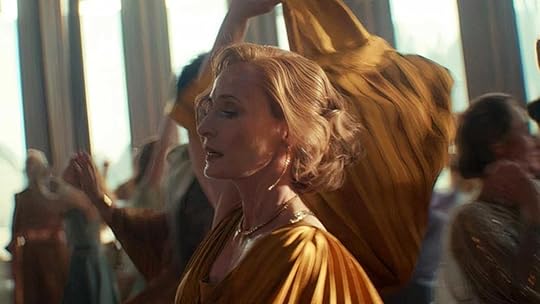 Lucasfilm
Lucasfilm In an interview with Vulture, O’Reilly said this about the dance scene: “What we’re witnessing here is a woman who is dancing to stop herself from screaming. We’re seeing a woman physicalize the chaos that is in her head at that moment. She has to.” It’s good Mon Mothma got to cut loose for at least a brief moment. Star Wars fans know by Andor’s end, she’ll become the leader of the Rebel Alliance. The Rebellion’s true figurehead in the fight against the Empire. So she might as well cut the rug at a fancy party while she still can.
.youtube-embed{padding-bottom:56.25%!important;position:relative;overflow:hidden}.youtube-embed a,.youtube-embed iframe{display:block;width:100%;height:100%;position:absolute}.youtube-embed iframe{border:0}.youtube-embed img.youtube-cover{-o-object-fit:cover;object-fit:cover;height:100%;width:100%;cursor:pointer}.youtube-embed img.play-button{width:66px;position:absolute;left:46%;top:0;bottom:0;margin:auto;cursor:pointer}@media only screen and (max-width:499px){.youtube-embed img.play-button{left:45%;width:60px}}@media only screen and (max-width:425px){.youtube-embed img.play-button{left:44%;width:60px}}@media only screen and (max-width:375px){.youtube-embed img.play-button{left:43%;width:56px}}@media only screen and (max-width:345px){.youtube-embed img.play-button{left:42%;width:50px}}.youtube-embed .progressive-img{-webkit-filter:blur(10px);filter:blur(10px)}.youtube-embed .progressive-img.loaded{-webkit-filter:none;filter:none;-webkit-transition:-webkit-filter 1s ease-out;transition:-webkit-filter 1s ease-out;-o-transition:filter 1s ease-out;-moz-transition:filter 1s ease-out;transition:filter 1s ease-out;transition:filter 1s ease-out,-webkit-filter 1s ease-out}.youtube-embed .kskdDiv{display:none!important}The post Watch Mon Mothma’s Intense ANDOR Dance Scene for an Entire Hour appeared first on Nerdist.
In THE FANTASTIC FOUR: FIRST STEPS, Does Reed Richards Save His Earth By Dooming The Multiverse?
It’s general knowledge now that Marvel’s First Family will be facing off against the entity Galactus in The Fantastic Four: First Steps. But how will the Devourer of Worlds, who eats planets for breakfast, ultimately be defeated? Since the Fantastic Four live in their own alternate timeline, maybe they won’t actually defeat him, and they lose their world. But we think that’s unlikely. It’s too much of a bummer of an ending to have billions of people die in the Fantastic Four’s triumphant return to the big screen. So we don’t think they are going to do that exactly.
 Marvel Studios
Marvel Studios But what if Reed Richards (Pedro Pascal) saves his timeline with extreme measures, by somehow merging it with another one? What if through his super science equations, he fuses his timeline with that of the Sacred Timeline? We’re not sure exactly how that would work, but Reed’s a super genius. We’ll leave the super science to him. Also, his young son Franklin could play a part in it. We know that Reed Richards and his family are going to play a big role in the next two Avengers films. We think by saving his own reality, he might have doomed another one.
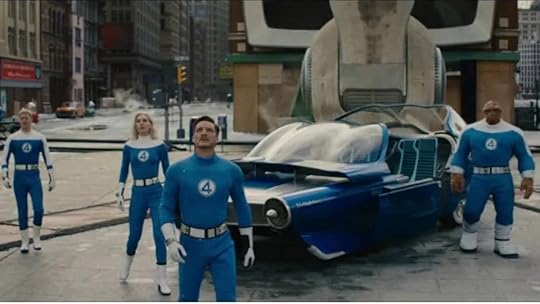 Marvel Studios
Marvel Studios Since First Steps takes place in an alternate 1960s, Reed’s tampering with time means that the reality where Steve Rogers became Captain America in 1941 and saw Tony Stark become Iron Man in 2008 would be altered, with the Fantastic Four now filling in the timeline gap of heroes. The FF’s presence would no doubt change the history of the MCU, even if only somewhat. We think that doesn’t just sound like an incursion, it sounds like the biggest incursion ever. But also, a low-key stealth incursion, where no one would immediately notice. How would everyone know that someone altered history? It also might be the catalyst to end the Multiverse as we know it.
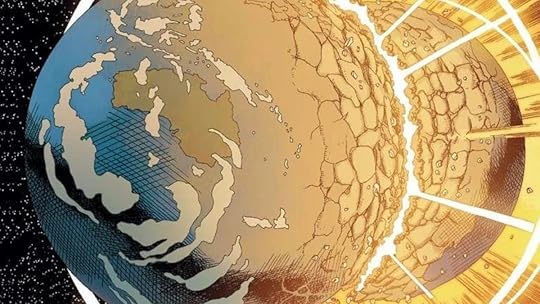 Marvel Comics
Marvel ComicsWe’ve long suspected that as a result of Secret Wars, several timelines will fuse together into a new sacred timeline. That lines up with how the 2015 Jonathan Hickman comic book series ended. Even though Marvel Studios makes big changes to the comics lore, they tend to keep to the broad strokes. This allows for a timeline where all the Marvel characters co-exist, even the X-Men. But we had assumed the FF wouldn’t be a part of this new reality until after Secret Wars. Now, we have a feeling that it may happen at the end of The Fantastic Four: First Steps.
In the comics, Reed Richards is the smartest man alive, but often his hubris is his own undoing. To save his reality, we could easily see his MCU counterpart taking drastic measures without consulting anyone else. Although, in a world without a Tony Stark or a Stephen Strange, we’re not exactly sure who he would even consult with when making such a big decision. We’ll have to wait and find out just how Mr. Fantastic saves his Earth from Galactus when The Fantastic Four: First Steps hits theater screens this July.
The post In THE FANTASTIC FOUR: FIRST STEPS, Does Reed Richards Save His Earth By Dooming The Multiverse? appeared first on Nerdist.
Hope Without the Force: How ANDOR Rewrites Rebellion
For decades, Star Wars told us that the Jedi were the best of us. Noble warriors. Philosophical peacekeepers. Space monks with laser swords and deep thoughts. They were the moral compass of the galaxy, a beacon of hope, balance, and some really unfortunate parenting decisions. But then Andor came along, and in its gritty, boots-on-the-ground portrayal of rebellion, the Jedi are conspicuously and tellingly absent. And honestly? Good riddance.
Andor makes the quiet argument that the Jedi weren’t just irrelevant to the uprising against the Empire. They were liabilities and detached from everyday suffering. The Jedi were fixated with balance and prophecy, and wildly ineffective at stopping fascism when it counted. The Jedi Order had their shot. They blew it. Meanwhile, on Ferrix and Narkina 5, regular people are building the rebellion through sweat, sacrifice, and solidarity. Not the Force.
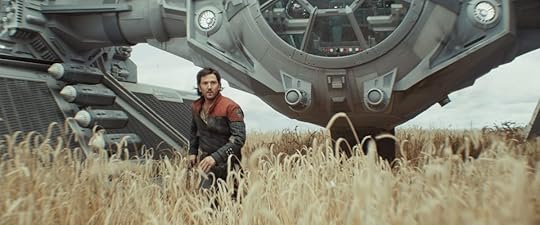 Lucasfilm/Disney+
Lucasfilm/Disney+Andor doesn’t just sideline the Jedi, it reframes the entire rebellion without them. There’s no Force and no Midichlorians. No elegant solutions from a more civilized age. Just people. Flawed, desperate, courageous people, who decide that enough is enough. The result is the most grounded, morally complex, and weirdly hopeful take on resistance the franchise has ever given us. Andor isn’t just “what if Star Wars was prestige TV?” It’s a reevaluation of who actually fought the Empire and a reminder that revolutions are won by the people who show up, not the ones meditating about it.
Rebellion Is Built on Hope (and Actual People)Let’s start with an uncomfortable truth: the Jedi failed. Not metaphorically. Not in a “the road to hell is paved with good intentions” way. They were spectacularly bad at their jobs. While Palpatine engineered a fascist takeover in broad daylight, the Jedi were too busy pontificating about balance to notice the galaxy was slipping into totalitarianism. Their detachment wasn’t just a quirk of their order. It was their fatal flaw.
Andor doesn’t waste time pointing fingers at them. It simply moves on. The Jedi aren’t mentioned, and frankly they aren’t missed. What replaces them isn’t another elite class of heroes. Instead, it’s working-class people, loners, bureaucrats, and ex-cons who decide to resist in whatever way they can. There’s no talk of prophecy or destiny in Andor. No one’s “the chosen one.” They’re just the ones who showed up.
Luthen Rael Is More Compelling Than Any Jedi, Fight MeEnter Luthen Rael. Antique dealer by day, rebel mastermind by night, and walking existential crisis 24/7. He’s not wise nor grounded. He’s actually not even a good person. But he is the guy doing what needs to be done. His now-iconic monologue, “I burn my life to make a sunrise I know I’ll never see…” (chills, y’all), hits harder than any Jedi fortune-cookie wisdom. He’s not waiting for the Force to guide him. He’s making brutal choices, in the dark, for a future that might not come.
That’s the kind of leadership Andor values: not moral purity, but moral clarity. The willingness to compromise yourself to protect others. It’s the exact opposite of Jedi philosophy, which prioritizes detachment and individual spiritual balance over action.
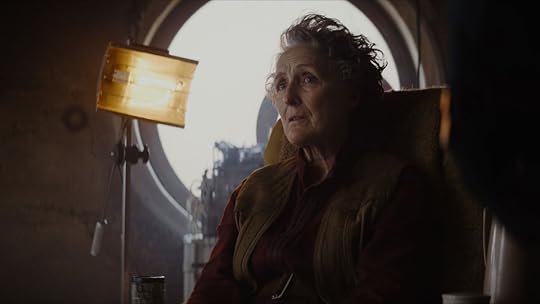 Lucasfilm
LucasfilmAnd then there’s Maarva. She’s not one with the Force nor trained in combat. She’s a woman who’s built a life amid the Empire’s growing shadows, who loses her husband, and who still finds the courage to spark a rebellion. Her funeral speech, pre-recorded, played through a droid turned projector, and backed by a marching band, might just be the most rousing moment in all of Star Wars. No lightsabers. No mind tricks. Just truth, defiance, and a call to arms.
What makes this moment so extraordinary isn’t just the words themselves, but how Maarva uses what little she has left, her voice, her droid, her final moments, to spark resistance. She can’t physically fight the Empire anymore, but she finds a way to rouse her community and Cassian anyway. It’s a perfect distillation of what makes Andor’s approach to resistance so powerful: using whatever tools are available, no matter how modest, to fight back against overwhelming odds.
Compare that to Yoda, calmly telling Luke “Wars do not make one great,” after a lifetime of co-signing them from a distance. The contrast is brutal.
The Absence of the Force Makes It All More Powerful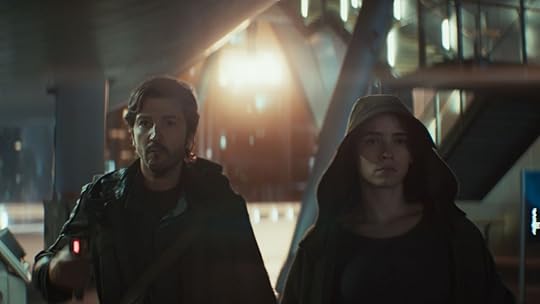 Lucasfilm/Disney+
Lucasfilm/Disney+Ironically, by taking the Force out of the equation, Andor gives us the most powerful version of hope in the franchise. Without Jedi powers or galactic destiny, rebellion becomes something anyone can choose. It’s no longer about whether the Force is with you. It’s whether you’re willing to risk your life for someone else. Plain and brutally simple.
There isn’t a single lightsaber ignition, and the show is better for it. The mystical (read: impractical) weapons of the Jedi are replaced with blasters that jam, improvised explosives, and sometimes just a brick thrown at the right moment. The absence of lightsabers isn’t just a stylistic choice; it’s a thematic statement. It tells us that resistance doesn’t come from special powers or ancient lineages. It comes from necessity, from rage, from love.
When Cassian faces down stormtroopers, he can’t deflect their blaster bolts. When Luthen escapes an Imperial cruiser, there’s no mind trick to save him. They survive on wits, grit, and sometimes sheer desperation. The stakes feel higher because everyone is vulnerable. No one is guaranteed to make it out. And that vulnerability makes every act of courage more meaningful, every sacrifice that much more devastating.
RELATED ARTICLE
Kino Loy’s Journey on ANDORThink about Kino Loy, played to perfection by Andy Serkis. He starts out just trying to finish his prison sentence, only to realize the system was never going to let him go. He leads a prison break fueled by chaos and raw courage, only to reveal he can’t swim.
It’s devastating not just because it means he can’t follow the others to freedom, but because the prison was built with that in mind. The system didn’t need fences or an army of guards. It relied on fear, false hope, and the simple barrier of water. Kino gave everything to free others, only to be stopped by something so ordinary, so human. No grand exit. No reward. Just one man who did what he could to help others escape, knowing he’d be left behind.
Or Bix. Poor, sad, tortured Bix. Broken. Haunted. And yet when it matters, she still holds the line and resists. No Jedi ever had that kind of strength, at least not without the Force to carry them. Andor strips rebellion down to its barest truth: people fighting for each other, not because they’re destined to, but because they have to.
The Jedi Were Legends. The Rebellion Was Real.This isn’t about dunking on the Jedi for the sake of it. They had their moment. Luke’s arc in the original trilogy is still powerful. A farm boy, swept up in a galactic war, learning that true power comes from faith and compassion? Meat and potatoes kind of hero’s journey stuff.
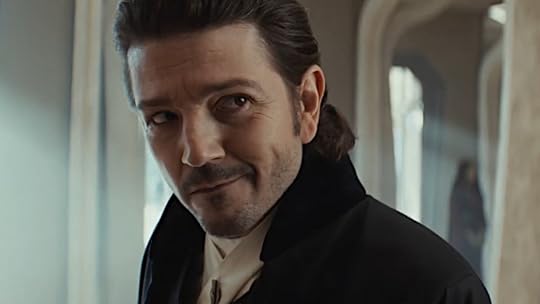 Lucasfilm
Lucasfilm But Andor belongs to a different tradition and a different time. It’s not mythic. It’s political. It doesn’t believe in fate. It believes in people and that fascism isn’t beaten by space magic. It’s beaten by solidarity, sacrifice, and a decision to act.
The Jedi stood apart from the galaxy. The characters in Andor are steeped in it. They get hurt. They get compromised and they lose. And yet, they fight. That’s not just more realistic. It’s more inspiring.
The Galaxy Didn’t Need More Jedi. It Needed More People Like Maarva.In a galaxy full of ancient prophecies and chosen ones, Andor reminds us that revolutions aren’t started by the divine. They’re started by the desperate, the furious, and the brave. The Jedi were legends. But the people of Ferrix, Narkina 5, and Coruscant’s underworld? They’re the reason there’s a New Republic at all.
So maybe the Force is still out there. In A New Hope, the Force is everywhere, spoken like a prayer, a mystery, a myth. But in Andor, the real force is community. Collective action. People who light themselves on fire so someone else can see the way.
History remembers the Jedi, but freedom was built by the forgotten, those who fought not because they were special, but because they refused to be silent.
The post Hope Without the Force: How ANDOR Rewrites Rebellion appeared first on Nerdist.
Watch a Discussion of ANDOR Season 2 Episodes 1-3
We here at Nerdist could not be more excited that Andor has returned to our screens. For our money, it’s the best Star Wars thing, with its heady mixture of political intrigue, tense espionage, and spaceships pew pew pew. The downside, of course, is we only get four weeks of it, with three episodes dropping at a time. But the upside is we get to talk about a lot of episodes at once! And that is indeed what we’re doing every week. Laser Focus, our weekly deep-dive podcast, will be looking at Andor all season long, in audio and video format.
 Lucasfilm
LucasfilmThe host of Laser Focus—yours truly, Kyle Anderson—welcomes members of the Nerdist staff to get into all things Cassian. For episodes one-three, Rotem Rusak and I discuss Mon Mothma dancing, sad Syril Karn, and what in the galaxy Mr. Andor is doing. Check it out below!
The days appear numbered for many members of the nascent Rebellion as Director Krennic appears to recruit Dedra Meero for nefarious purposes tied to a “special project,” whatever that is. Cassian steals a TIE Fighter and gets caught up in petty rebel squabbles. Bix and Brasso try to avoid Imperial detection on a rural planet. And Mon Mothma balances a lot during her daughter’s wedding weekend. Doesn’t help to have Luthen Rael continually reminding her he’ll kill anyone if you let ‘im.
Join us every Wednesday on YouTube and Thursday on podcatchers for Laser Focus discussions of Andor season two.
Kyle Anderson is the Senior Editor for Nerdist. He hosts the weekly pop culture deep-dive podcast Laser Focus. You can find his film and TV reviews here. Follow him on Letterboxd.
.youtube-embed{padding-bottom:56.25%!important;position:relative;overflow:hidden}.youtube-embed a,.youtube-embed iframe{display:block;width:100%;height:100%;position:absolute}.youtube-embed iframe{border:0}.youtube-embed img.youtube-cover{-o-object-fit:cover;object-fit:cover;height:100%;width:100%;cursor:pointer}.youtube-embed img.play-button{width:66px;position:absolute;left:46%;top:0;bottom:0;margin:auto;cursor:pointer}@media only screen and (max-width:499px){.youtube-embed img.play-button{left:45%;width:60px}}@media only screen and (max-width:425px){.youtube-embed img.play-button{left:44%;width:60px}}@media only screen and (max-width:375px){.youtube-embed img.play-button{left:43%;width:56px}}@media only screen and (max-width:345px){.youtube-embed img.play-button{left:42%;width:50px}}.youtube-embed .progressive-img{-webkit-filter:blur(10px);filter:blur(10px)}.youtube-embed .progressive-img.loaded{-webkit-filter:none;filter:none;-webkit-transition:-webkit-filter 1s ease-out;transition:-webkit-filter 1s ease-out;-o-transition:filter 1s ease-out;-moz-transition:filter 1s ease-out;transition:filter 1s ease-out;transition:filter 1s ease-out,-webkit-filter 1s ease-out}.youtube-embed .kskdDiv{display:none!important}The post Watch a Discussion of ANDOR Season 2 Episodes 1-3 appeared first on Nerdist.
KFC Brings Back Chicken & Waffles, Announces New Strawberry & Crème Pie Poppers
Everyone has a favorite duo. Maybe it’s Batman and Robin, Kirk and Spock, Lucy and Ricky, Bert and Ernie, or Thelma and Louise. But why limit yourself to just people when there are so many other types of pairs to enjoy in life. That includes one of the best ever, Chicken and Waffles. We can never get enough of that delectable duo, which is probably why KFC is finally bringing it back to its menu. And if that’s sweet and savory dish isn’t enough to satiate your fast food needs, the chain has also announced an all-new limited-time dessert, Strawberry & Crème Pie Poppers.
 KFC
KFCStarting today, Monday April 28, KFC is serving up Chicken and Waffles again after five years. The restaurant chain is adding three ways to enjoy the returning dish at locations nationwide. You can grab a meal for yourself or enough for the whole family. (Or, you know, you can make the family one a giant portion just for yourself. We’re not judging… because it’s us. We’re getting the giant portion for ourselves.)
Here’s who you can enjoy KFC’s Chicken and Waffles:
$7 Tenders and Waffle Box: Three Original Recipe Tenders with a Liege-style waffle and Mrs. Butterworth’s syrupKFC’s $7 Two-Piece Fried Chicken and Waffle Box: Two pieces of juicy fried chicken (Original Recipe or Extra Crispy) with a a Liege-style waffle and Mrs. Butterworth’s syrup$25 Chicken & Waffles Fan Favorites Box: Four pieces of fried chicken, 12 KFC Nuggets, four Liege-style waffles, and a choice of four syrups or dipping sauces. KFC
KFCIf waffles and syrup won’t be enough to make your sweet tooth happy, you can also get KFC’s new Strawberry & Crème Pie Poppers. The company says they come “packed with a delicious strawberry and cream filling in a buttery, flaky crust.” You can pick them up in both four and ten-packs “while supplies last.”
Both the return of Chicken and Waffles and the addition of Strawberry & Crème Pie Poppers are a part of KFC’s Mother’s Day celebration this year. Digital orders during mom’s big weekend will include a $0 delivery fee. Free delivery and celebrating mom? What a fitting pair while we’re celebrating one of our favorite food duos.
The post KFC Brings Back Chicken & Waffles, Announces New Strawberry & Crème Pie Poppers appeared first on Nerdist.
The Antihero Era: Why the Thunderbolts Might Be Marvel’s Most Human Team Yet
Marvel’s finally diving headfirst into the messy, complicated world of antiheroes—and with Thunderbolts*, they might’ve just assembled their most emotionally honest team yet. Forget the do-gooder Avengers. If the MCU has ever had a crew that bleeds, bruises, and actually feels like us, this is it. Unlike Earth’s Mightiest Heroes, this squad isn’t saving the world out of nobility. They’re doing it while carrying deep scars, tangled histories, and more trauma than they’d ever admit. In an age where audiences crave imperfection and vulnerability, that might be exactly what makes them so relatable.
And that’s not just a vibe—it’s a trend, backed by data. A Morning Consult survey found that 52% of adults now prefer morally ambiguous films over traditional good-vs-evil narratives. Another OnePoll study revealed that over a third of viewers relate most to antiheroes, drawn to their flaws and emotional complexity.
RELATED ARTICLE
THUNDERBOLTS* Is a ‘Badass Indie, A24-Feeling Assassin Movie,’ Shares Florence PughWe’ve already seen that hunger thrive on TV. The Boys skewers the very idea of superheroism as a corporate-branded lie. Peacemaker takes a blood-soaked mercenary—a guy who’d probably kill you for looking at him wrong—and forces him to confront the hollowness of his ideals. And Loki, the god of mischief himself, has stumbled his way through grief, love, and multiversal identity crises, all while never fully shaking his darker instincts.
Now Thunderbolts* brings that emotional mess to the big screen. And this cast? Let’s just say no one’s showing up squeaky clean.
Yelena Belova: The Wounded Heart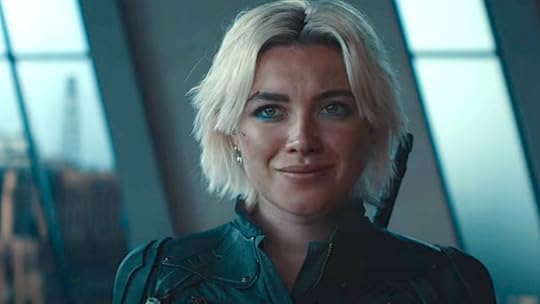 Marvel Studios
Marvel StudiosFlorence Pugh’s Yelena Belova has quietly become one of the MCU’s most magnetic presences. Still armored in grief and cutting humor, she carries Natasha’s legacy like an old scar—visible, tender, and formative. But she’s evolving. Where she was once driven by vengeance, she’s now trying to understand what strength really means. Natasha’s final act in Avengers: End Game wasn’t just brave—it was selfless. And that reframed Yelena’s whole view of heroism, pushing her toward something deeper: agency, direction… maybe even peace.
Bucky Barnes: The Survivor Marvel Studios
Marvel Studios Bucky Barnes (Sebastian Stan) has endured one of the MCU’s most gut-wrenching arcs: from loyal friend to government weapon to a man desperately trying to piece together the wreckage of his past. He’s no invincible soldier. He’s a survivor, carrying the crushing weight of what was done to him, and what he was forced to do. The Winter Soldier and Civil War weren’t just the MCU’s best action showcases. They were also quiet studies in trauma and identity. For Bucky, it’s never been about easy redemption. It’s about a brutal reckoning and the long, hard fight to forge a new purpose after being a tool for so long, in a world that still struggles to see him as anything else.
Ghost: The Fragmented Self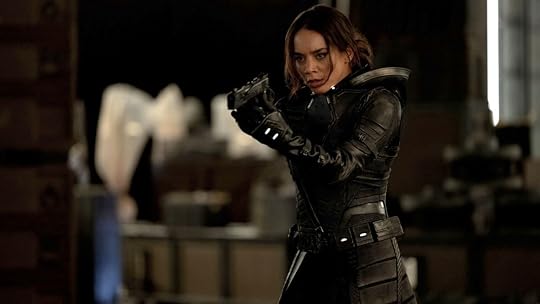 Marvel Studios
Marvel Studios Ava Starr (played by Hannah John-Kamen) wasn’t a villain so much as a victim—left behind by institutions, shaped by pain, and barely held together by the one person who truly cared: Dr. Bill Foster (Laurence Fishburne), who tried to help her reclaim her humanity. Introduced in Ant-Man and the Wasp, Ghost’s trauma literally fractured her being.
Her unstable phasing became a metaphor for how unresolved pain can splinter your sense of self. The return of Ghost in Thunderbolts* is significant, suggesting both her survival and the possibility of healing. After years of being weaponized and in constant agony, this could be her chance to finally catch a break.
Red Guardian: The Washed-Up Idealist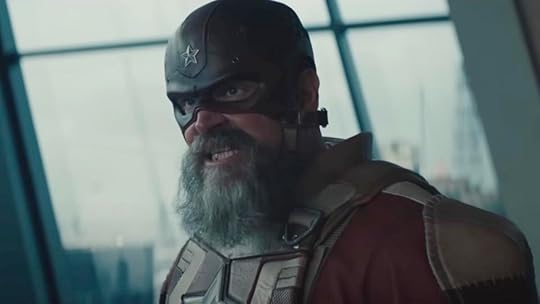 Marvel Studios
Marvel Studios David Harbour’s Red Guardian showed up in Black Widow full of bluster, bravado, and Cold War nostalgia. But beneath the jokes is a man wrestling with faded purpose and misplaced glory. He represents a kind of fractured patriotism—a guy molded by myth, now trying to matter again. His arc isn’t flashy, but it’s quietly heartbreaking. In a team like the Thunderbolts, that kind of emotional weight might finally find a place to land.
John Walker/U.S. Agent: The Fallen Patriot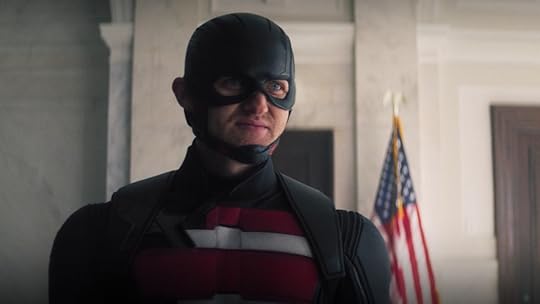 Marvel Studios
Marvel StudiosWyatt Russell’s John Walker was hand-picked to be the new Captain America in The Falcon and the Winter Soldier. He was supposed to be the embodiment of what the government wanted: the perfect patriot. But Walker quickly found out that combat in the field is a whole different ballgame in a world of superheroes. Giant green rage monsters like the Hulk, heavily armored geniuses like Tony Stark, and the elite Dora Milaje—who, let’s just say, gave him a very humbling experience—showed him just how out of his depth he was.
His partner’s death pushed him over the edge, leading him to take the super-soldier serum. Stripped of the Captain America shield and driven to questionable acts, Walker’s now on a path to try and reclaim his honor and solidify his morality. This is a guy who’s been to the highest highs and lowest lows, and now he’s got to figure out where he stands.
Taskmaster: The Blank Slate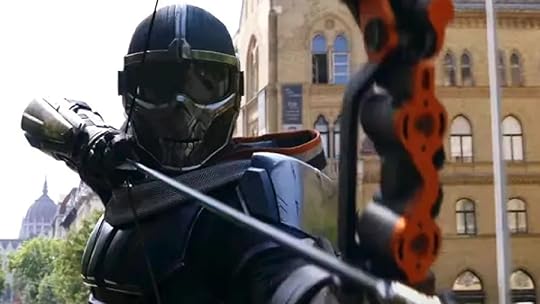 Marvel Studios
Marvel StudiosOlga Kurylenko’s Taskmaster was originally introduced as a living weapon in Black Widow—controlled, manipulated, and erased. She wasn’t evil; she was stripped of autonomy. Now, she’s free but unmoored, and that opens up a whole new emotional playground. Her story is less about revenge and more about discovering identity after it’s been stripped away. It’s not just character development. It’s self-discovery in real time.
This lineup turns the team dynamic into something deeper, more like a thesis on survival and self-worth. The film asks: What does redemption look like when the world won’t forgive you? And more urgently: How do you forgive yourself?
The Wildcard Nemesis: Robert Reynolds a.k.a. The SentryAnd then there’s the real wildcard: Robert “Bob” Reynolds (played by Lewis Pullman), a.k.a. The Sentry. He’s got the power of a god, but he’s also at war with himself—literally. His darker half, the Void, is a shapeshifting force of chaos and destruction that lives inside him, threatening to undo everything in its path. Imagine Superman if he struggled with schizophrenia, if every act of heroism came with the risk of unleashing something terrifying. Reynolds is unstable, unpredictable, and the kind of character who forces everyone around him to question what heroism really means when the biggest battle is happening inside your own head.
So it’s fitting that this particular group is the one sent to stop him. Each of them is carrying guilt, pain, confusion—and yet they’re the ones trying to save the world. Not for glory. Not for redemption. But to make sense of their own stories. To feel like they belong somewhere. Maybe in taking down someone who’s torn between two selves, they’ll figure out how to reconcile their own. And hey, maybe they will earn their place on a Wheaties box, too.
 Marvel Studios
Marvel StudiosWhen it comes to Thunderbolts*, think The Suicide Squad meets The Breakfast Club but make it Marvel. The mission’s one thing, but the real conflict is whether any of them actually feel like they deserve to be there in the first place.
We don’t know how massive the threat will be, or how this team will come together. But we do know this: Thunderbolts* might just be the MCU’s most honest reflection of what it means to be broken, trying, and human. From the early buzz, it sounds like Marvel has hit a home run with its Thunderbolts* movie.
Felipe Patterson is a freelance writer and entertainment journalist who has written for Taji Mag, Watercooler HQ, Newsweek, GQ South Africa, and other outlets. He writes about film, television, and culture.
The post The Antihero Era: Why the Thunderbolts Might Be Marvel’s Most Human Team Yet appeared first on Nerdist.
THE LAST OF US’ Scariest Moment Began as a Quiet Baseball Game
Catherine O’Hara’s Gail on The Last of Us might be a “complete f***ing disaster” personally, but after forty years on the job its obvious Jackson, Wyoming’s only psychotherapist has her shit together professionally. She’s intuitive, clear, direct, and “sees things” others don’t. Gail just knows things about people. So when she speaks, it carries more than authority. Her words carry a sense of definitiveness, which is why her short conversation with Tommy during a kid’s baseball game was among The Last of Us‘ scariest scenes ever. What she said is just as foreboding for the show as it is for all of us.
 HBO
HBOWith Joel gone Tommy feels responsible for Ellie. That’s not exactly an easy job under the best of circumstances. It’s now harder than ever. In The Last of Us season two’s third episode, “The Path,” Tommy went to Gail for help following the commune’s rejection of Ellie’s proposal. “I’m nervous she’s gonna do something stupid,” he said.
Gail, once again, showed how smart she is by correctly identifying Ellie as a liar. They both know Ellie wasn’t being honest during her speech at the town meeting. But Ellie wasn’t just lying. “There was maybe one person she told the truth to, and he’s….” Gail said. We know Gail is right. Gail is always right. That made what she said next truly terrifying, turning the idyllic baseball scene into one of The Last of Us‘ scariest.
 HBO
HBO“I just don’t want her to go down the same paths that Joel did. Coming up with justifications and such,” Tommy said. “All he was really doing was lashing out.” Ellie, whether we agree with it or not, has a real reason for going after Abby. She and her friends brutally murdered Joel. Ellie wants vengeance. She and Dina didn’t waste any time heading to Seattle to find it.
Like Dina, we knew what Ellie was going to do the second the council rejected her proposal. You don’t need four decades as a psychotherapist to understand who she is and what she’s all about. But the nightmare idea expressed at that baseball by Gail is that Ellie didn’t have a choice to make. It was made for her the day she was born. Gail’s reason why is horrifying for reasons that go beyond The Last of Us.
So you think she might have learned that behavior from him? Turns out nurture can only do this much. The rest is nature. If she’s on a path it’s not one that Joel put her on. No. No, I think they were walking side by side from the very start. Tommy I get it. You inherited her and you want to keep her out of trouble. Take it from a psychotherapist of 40 years: some people….some people just can’t be saved.
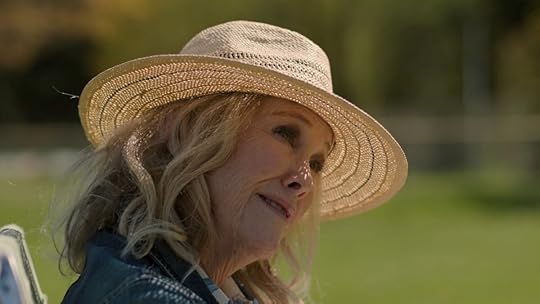 HBO
HBO“Some people just can’t be saved.” What a terrible truth we don’t want to be correct, but fear/know is. Just as chilling, though, is why. Gail says some can’t be saved because of who they are. Because of who they always have been and always will be. She said some of us are born to walk a path of destruction.
We want to think we’re in control of our own lives, that the choices we make are ours and ours alone. We also want to think that we can save those we love. With enough care and compassion, surely we can help those we care about walk a better path. Right? Maybe not. Maybe the destiny for some is self-destruction. And if we’re lucky enough not to be one of them, we’ll still be helpless while we watch them go down a path they’ll never return from.
Raiders and a fungus monster are easier to deal with in comparison. At least we have a shot against them. There’s nothing we can do about fate, ours or anyone else’s.
 HBO
HBOWith Ellie on a vengeful path to Seattle, Gail’s words feel less like a diagnosis and more like a sad, haunting promise on The Last of Us. That’s enough to make that baseball game among The Last of Us‘ scariest scenes. But what truly makes the words of Jackson’s smartest person so terrifying is what they mean for all of us.
Mikey Walsh is a staff writer at Nerdist. He fears he’s on a path of too many cheeseburgers. You can follow him on Bluesky at @burgermike. And also anywhere someone is ranking the Targaryen kings.
The post THE LAST OF US’ Scariest Moment Began as a Quiet Baseball Game appeared first on Nerdist.
Chris Hardwick's Blog
- Chris Hardwick's profile
- 132 followers



